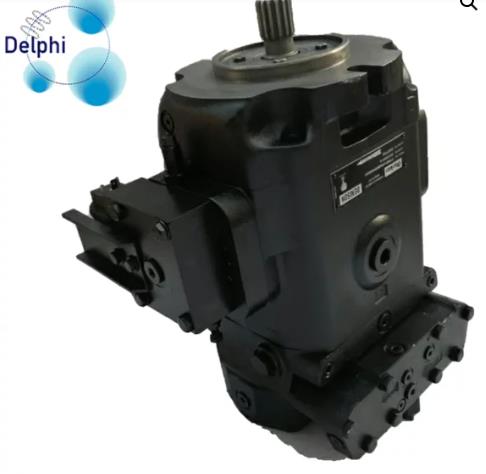Displacement: Displacement refers to the volume of fluid that the motor can move in a single rotation. It is typically measured in cubic centimeters (cc) or cubic inches (in³). The displacement affects the motor's speed and torque output.
Speed Range: The speed range indicates the motor's operating speed capabilities. It is important to match the motor's speed range with the requirements of your application to ensure optimal performance.
Torque: Torque is the rotational force generated by the motor and is usually measured in Newton-meters (Nm) or pound-feet (lb-ft). Consider the required torque output for your application to ensure the motor can handle the load.
Pressure Rating: The pressure rating specifies the maximum pressure the motor can handle. It is typically measured in pounds per square inch (psi) or bar. Ensure that the motor's pressure rating matches or exceeds the system pressure in your hydraulic system.
Efficiency: Efficiency refers to the motor's ability to convert hydraulic energy to mechanical energy without significant losses. Higher efficiency motors can result in improved system performance and energy savings.
Mounting Configuration: Hydraulic motors come in various mounting configurations, including flange, face, and shaft mount. Consider the mounting requirements of your application and ensure compatibility with the motor's mounting configuration.
Shaft Type and Size: The shaft type and size should match the requirements of your application. Common shaft types include keyed, splined, and tapered shafts.
Operating Conditions: Consider the operating conditions of your application, including temperature, humidity, and environmental factors. Choose a motor that is designed to withstand the specific conditions it will be exposed to.
Control Options: Some hydraulic motors offer additional control options, such as speed control or reversible rotation. These features can provide enhanced functionality and flexibility in certain applications.
Seal Type: The seal type of the hydraulic motor affects its ability to prevent leakage and maintain proper lubrication. Common seal types include lip seals, radial shaft seals, and mechanical face seals.
It's important to note that the specific specifications and features you prioritize will depend on the requirements of your application. Consulting with hydraulic system experts or manufacturers can provide valuable guidance in selecting the most suitable hydraulic motor for your needs.
Analyze the Application: Start by thoroughly understanding the specific application where the hydraulic motor will be used. Consider factors such as the type of machinery or equipment, the desired function of the motor, and the load or workload that the motor needs to drive or operate.
Calculate the Required Torque: Determine the torque required by your application. This can be done by identifying the maximum load or force that the motor needs to overcome or drive. Consider factors like load characteristics, frictional losses, and safety margins. You may need to consult engineering calculations, equipment specifications, or perform measurements to accurately estimate the required torque.
Consider Speed Requirements: Evaluate the desired operating speed for your application. This can depend on factors such as cycle time, productivity targets, or specific operational needs. Determine the minimum and maximum speed ranges that are suitable for your application.
Consult Machinery or Equipment Specifications: Review the specifications or documentation of the machinery or equipment in which the hydraulic motor will be installed. Often, equipment manufacturers provide recommendations or requirements for the hydraulic motor, including displacement and speed range. These specifications can serve as a starting point for your selection process.
Seek Expert Advice: If you are unsure or require more specialized knowledge, h1b110 danfoss consult with hydraulic system experts, engineers, or manufacturers who have experience in your specific industry or application. They can provide valuable insights and guidance based on their expertise.
Consider Future Needs: Anticipate any potential changes or expansions in your application that might affect the displacement and speed range requirements. It's beneficial to choose a hydraulic motor with some flexibility to accommodate future needs, if possible.
By considering these steps and gathering relevant information, you can make a more informed decision regarding the displacement and speed range requirements for your hydraulic motor, ensuring it meets the demands of your application effectively.

Previous: WPC Extrusion Mould For WPC Door Board
Copyright:@2020-2021
Comments Please sign in or sign up to post.
0
0 of 500 characters used